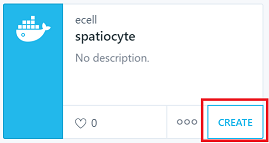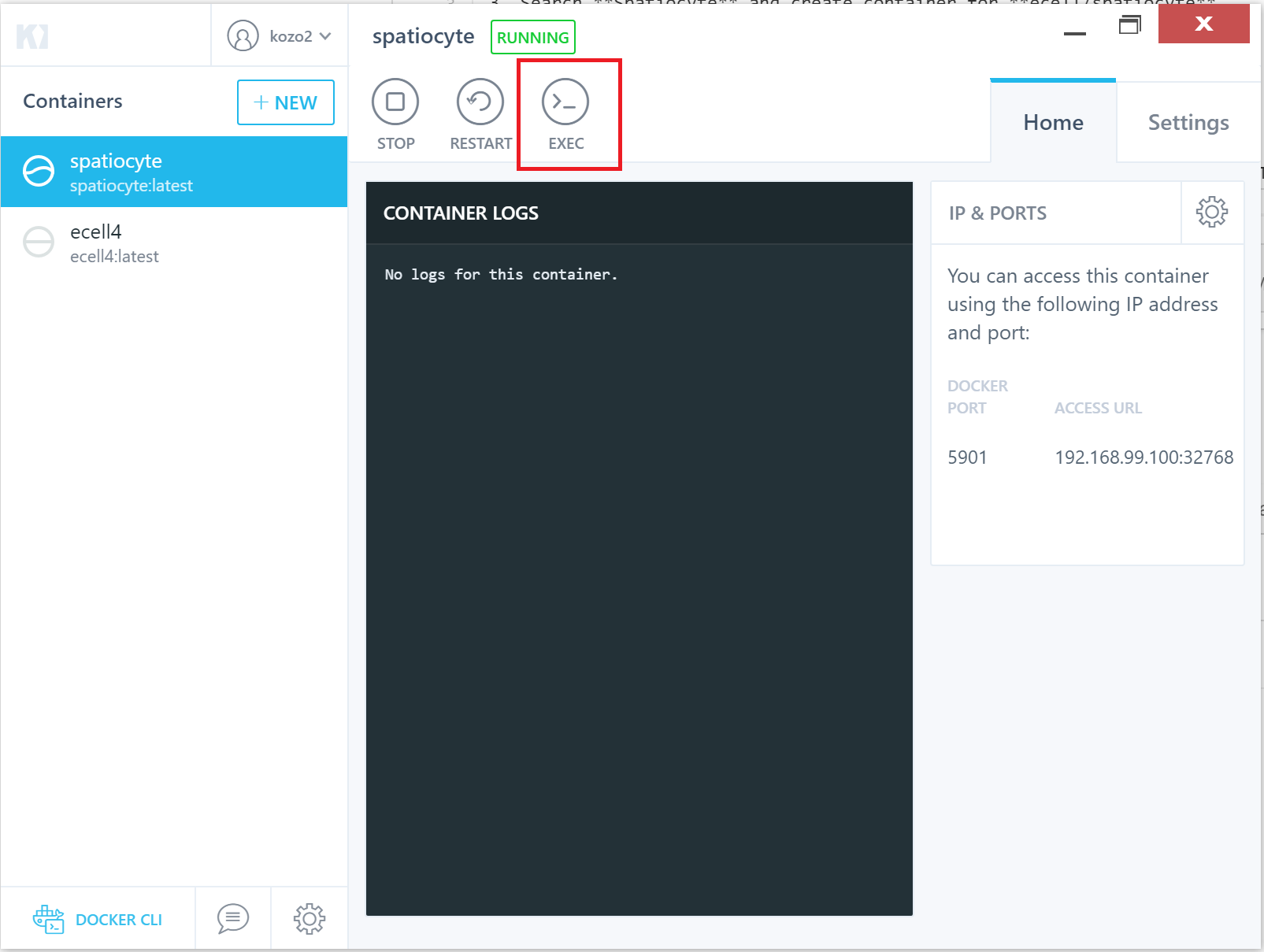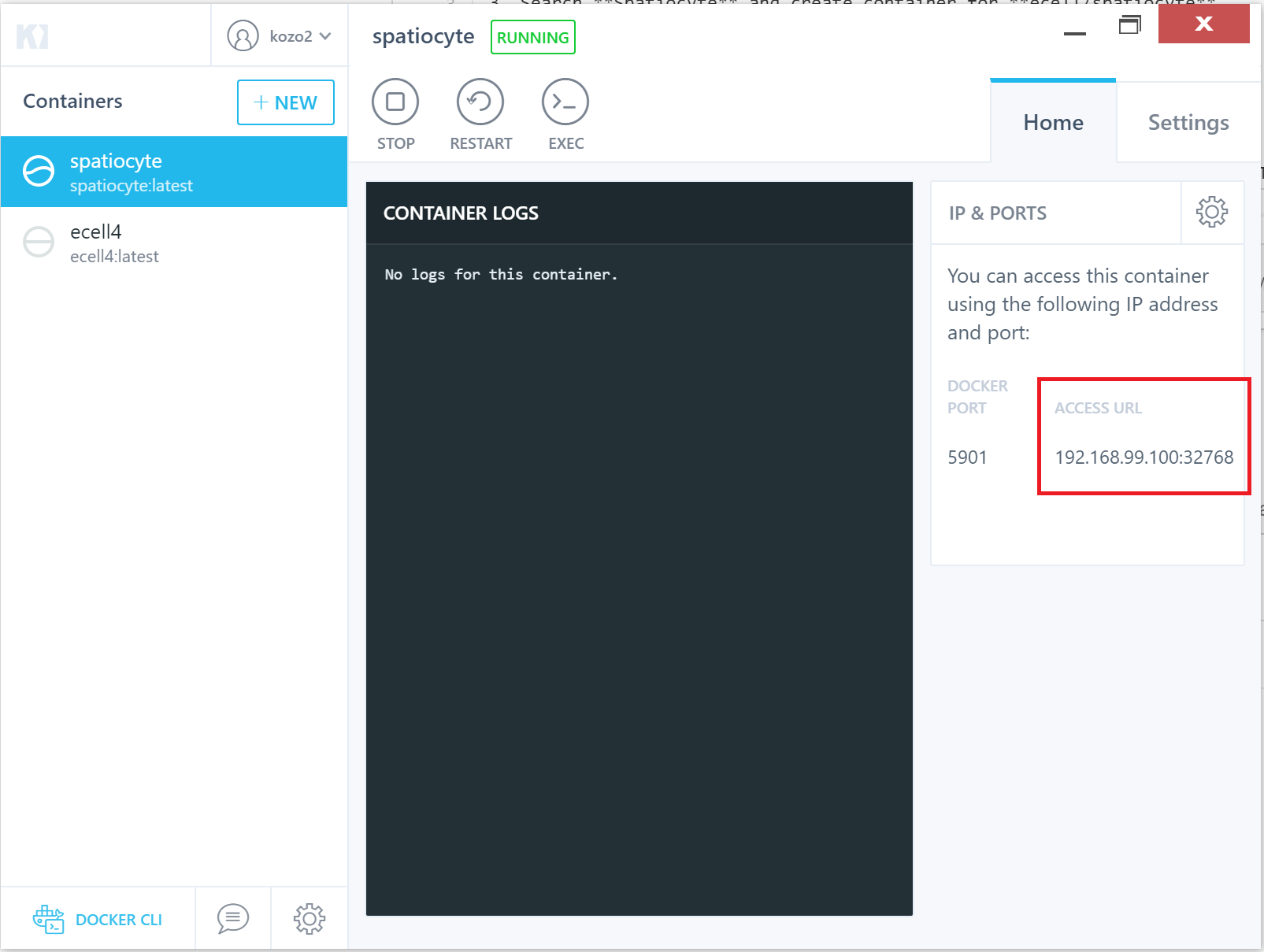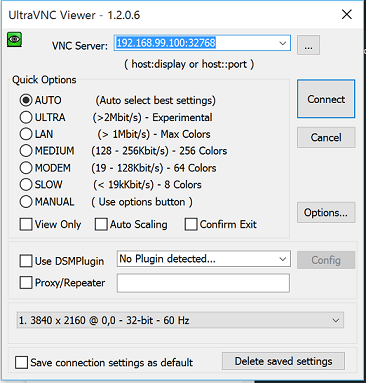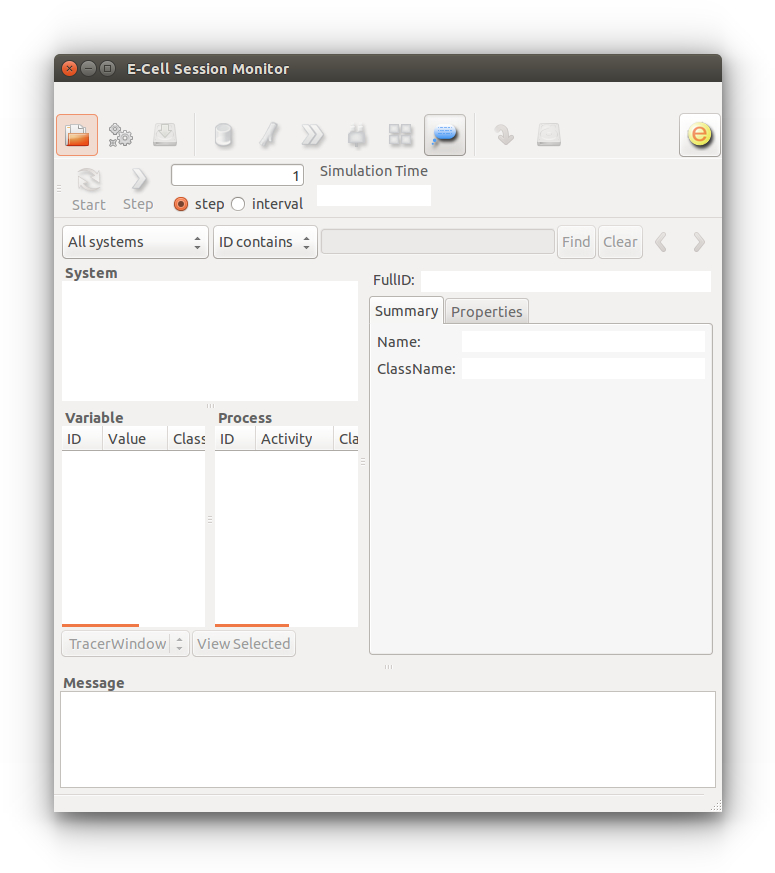-
Specify the stepper and voxel radius
To build a simple 3D model, open a text editor and add the Python scripts as provided in the code boxes below. Each Spatiocyte model requires the SpatiocyteStepper. It advances the simulation in an event-driven manner. The radius of the hexagonal close-packed lattice voxels can be set in the SpatiocyteStepper using the VoxelRadius property. In the code below, we have set the radius to 4.4 nm.
sim = theSimulator.createStepper('SpatiocyteStepper', 'SS')
sim.VoxelRadius = 4.4e-9
theSimulator.rootSystem.StepperID = 'SS'
The memory usage increases linearly with the number of voxels. In a 64-bit system, each voxel typically takes up 108 bytes of memory. The number of voxels with radius, r in a volume, V is given by V/(4r
3
2
0.5
). In each compartment, the StepperID must be set to the SpatiocyteStepper ID. Here we only have the root compartment, rootSystem and we set its StepperID to 'SS' which is the SpatiocyteStepper ID given in the first line.
-
Define compartment geometry
We will use a cuboid compartment geometry for this model. The GEOMETRY variable of a volume compartment specifies one of the six supported geometric primitives: cuboid (‘0’), ellipsoid (‘1’), cylinder (‘2’), rod (‘3’), pyramid (‘4’) and erythrocyte (‘5’). More complex forms can be constructed using a combination of these primitives. Compartments without the GEOMETRY definition is set to the cuboid form since the default value is ‘0’.
theSimulator.createEntity('Variable', 'Variable:/:GEOMETRY').Value = 0
theSimulator.createEntity('Variable', 'Variable:/:LENGTHX').Value = 2.5e-7
theSimulator.createEntity('Variable', 'Variable:/:LENGTHY').Value = 2.5e-7
theSimulator.createEntity('Variable', 'Variable:/:LENGTHZ').Value = 2.5e-7
The three variables LENGTH[X, Y, Z] can specify the compartment lengths in the directions of [x, y, z]-axes, respectively. In the example above, the lengths are set to 250 nm. More information about the LENGTH variable definition can be found in the
documentation
.
-
Assign compartment boundary types
When a volume compartment has the cuboid geometry, as in our example model, the boundary type can be specified using [XY, XZ, YZ]PLANE variables. The boundary type can be reflective (‘0’), periodic (‘1’) or semi-periodic (‘2’). A semi-periodic boundary allows nonHD molecules to move unidirectionally from one boundary to the other. We set all the boundaries to 1 to make them periodic:
theSimulator.createEntity('Variable', 'Variable:/:XYPLANE').Value = 1
theSimulator.createEntity('Variable', 'Variable:/:XZPLANE').Value = 1
theSimulator.createEntity('Variable', 'Variable:/:YZPLANE').Value = 1
-
Set species and their initial numbers
Every compartment must have a VACANT variable that represents the 'species' of empty voxels within the compartment. We would like to add the reaction A + B ->
C + C in the model, with A and B species each made up of 500 molecules initially. These three variables can be declared as below:
theSimulator.createEntity('Variable', 'Variable:/:VACANT')
theSimulator.createEntity('Variable', 'Variable:/:A').Value = 500
theSimulator.createEntity('Variable', 'Variable:/:B').Value = 500
theSimulator.createEntity('Variable', 'Variable:/:C').Value = 0
-
Populate non-zero species
We must populate the molecules of A and B species in the compartment before the simulation is started because they initially have non-zero numbers. We populate them using the MoleculePopulateProcess.
populator = theSimulator.createEntity('MoleculePopulateProcess', 'Process:/:pop')
populator.VariableReferenceList = [['_', 'Variable:/:A']]
populator.VariableReferenceList = [['_', 'Variable:/:B']]
-
Fix the diffusion property of each species
We are going to diffuse all three species, A, B and C in the compartment with a diffusion coefficient of 0.1 um
2
/s. We specify the diffusion property of each species with the DiffusionProcess:
diffuser = theSimulator.createEntity('DiffusionProcess', 'Process:/:diffuseA')
diffuser.VariableReferenceList = [['_', 'Variable:/:A']]
diffuser.D = 1e-13
diffuser = theSimulator.createEntity('DiffusionProcess', 'Process:/:diffuseB')
diffuser.VariableReferenceList = [['_', 'Variable:/:B']]
diffuser.D = 1e-13
diffuser = theSimulator.createEntity('DiffusionProcess', 'Process:/:diffuseC')
diffuser.VariableReferenceList = [['_', 'Variable:/:C']]
diffuser.D = 1e-13
-
Specify the reaction
Next, we specify the reaction A + B ->
C + C using the DiffusionInfluencedReaction process. We set the reaction probability, p to unity, which means a C molecule will be created whenever an A and a B molecule collide.
binder = theSimulator.createEntity('DiffusionInfluencedReactionProcess', 'Process:/:reaction1')
binder.VariableReferenceList = [['_', 'Variable:/:A','-1']]
binder.VariableReferenceList = [['_', 'Variable:/:B','-1']]
binder.VariableReferenceList = [['_', 'Variable:/:C','1']]
binder.VariableReferenceList = [['_', 'Variable:/:C','1']]
binder.p = 1
-
Set the logger for Spatiocyte visualizer
We can use the VisualizationLogProcess to log the coordinates of the diffusing species at specified intervals or at the shortest stepper intervals (default). The coordinates will be saved in the file VisualLog.dat in binary format. The Spatiocyte Visualizer can load the log file to display the molecules in 3D while the simulation is running or after it has ended.
logger = theSimulator.createEntity('VisualizationLogProcess', 'Process:/:logger')
logger.VariableReferenceList = [['_', 'Variable:/:A']]
logger.VariableReferenceList = [['_', 'Variable:/:B']]
logger.VariableReferenceList = [['_', 'Variable:/:C']]
-
Set molecule coordinates logger
The coordinates of the molecules can also be saved in csv format with CoordinateLogProcess:
coord = theSimulator.createEntity('CoordinateLogProcess', 'Process:/:coord')
coord.VariableReferenceList = [['_', 'Variable:/:A']]
coord.VariableReferenceList = [['_', 'Variable:/:B']]
coord.VariableReferenceList = [['_', 'Variable:/:C']]
-
Specify the model run time
Finally, we need to tell the simulator how long the model should be run. Here, we will run it for 0.08 s.
run(0.08)
-
Run the model
Save the file as 3D.py and run the model in a terminal by issuing,
$ ecell3-session 3D.py
We can visualize the simulation with
$ spatiocyte
The above instruction will start the Spatiocyte visualizer, which will load the VisualLog.dat file and display the molecule positions in 3D. The shortcut keys to manipulate the visualizer are provided
here.
The complete model file can be downloaded
here.
